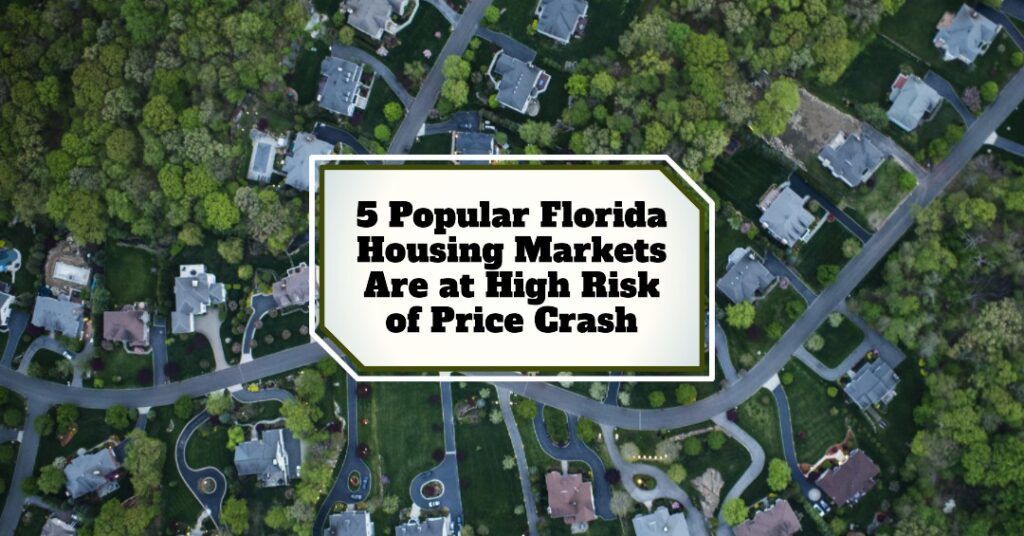Florida Housing Market: 5 Areas Facing Major Price Declines
The Florida housing market, once a hotspot for transplants and investors alike, is experiencing a drastic shift from its booming highs. As per recent insights from Cotality (formerly CoreLogic), several Florida markets are now flagged for their high risk of significant price declines. This article dives into the current state of Florida’s real estate and highlights five specific markets facing potential downturns.
An Overview of Florida’s Housing Shift
For years, Florida has been synonymous with skyrocketing home prices, driven by a surge in demand from retirees and remote workers fleeing more expensive northern cities. However, real estate markets are cyclical, and the rapid appreciation is showing signs of correction. As of April 2025, Florida’s statewide average home price growth has dipped to -0.8%, unearthing vulnerabilities in regions once considered prime investment territory.
Key Trends in the National Housing Market
-
A nationwide slowdown in home price growth: The U.S. saw a year-over-year price increase of only 2.0% in April 2025, a stark decline from the near 3% recorded just two months prior.
- Notable regions showing price drops include Florida, Texas, Hawaii, and Washington D.C., causing Florida’s average sales price to fall to $390,000, below the national median of $395,000.
Why Florida Is Feeling the Chill
Florida’s housing market is under pressure from several factors that have quickly altered the landscape:
-
Affordability Crisis: Even though median prices have dipped, many areas remain out of reach for potential buyers, with an income of around $87,800 required to afford a median-priced home.
[link-whisper-related-posts] -
Increased Inventory: With more homes available and fewer buyers, sellers find themselves in a less advantageous position, often leading to price reductions.
-
Cooling Migration Trends: Although migration continues, the pace has slowed considerably. Factors like rising property taxes and soaring homeowner insurance costs are prompting reconsideration among potential buyers.
- Investor Retreat: Higher interest rates are making property investments less appealing, constraining a major demand source in the market.
Five Florida Markets at High Risk of Price Decline
Cotality has pinpointed five markets facing the highest risk of substantial price declines in Florida. Let’s explore each:
1. Cape Coral, FL
Cape Coral ranks as the most at-risk market for price decline, currently experiencing a -6.5% year-over-year price drop. Following explosive growth, prices have retreated to levels last seen in spring 2022. With the market now more vulnerable amid rising insurance costs and demand shifts, it serves as an essential case study.
2. Lakeland, FL
Located between Tampa and Orlando, Lakeland has seen a steady price climb but is now facing a downward trend. While prices have dipped from a peak near $400,000 in early 2024, the shift reflects broader economic pressures that influence affordability for typical buyers.
3. North Port, FL
North Port shows a -4.3% decline as of April 2025. Initially witnessing rapid appreciation, it peaked near $480,000 in early 2023 but has since corrected amidst volatility in buyer demand, making it a focal point for ongoing market adjustments.
4. St. Petersburg, FL
St. Petersburg has seen its prices settle around $400,000, down from a peak of nearly $450,000. While it boasts cultural and economic diversity, the rapid price increases may have outpaced local wages, creating fragile market conditions.
5. West Palm Beach, FL
West Palm Beach faces the most volatile price trends, peaking near $480,000 before retreating to around $420,000. The unpredictable nature of its market, influenced by both demand and ownership costs, signals further potential for price corrections.
Conclusions: What This Means for Buyers, Sellers, and Homeowners
For Buyers
Take the opportunity to negotiate while keeping in mind that prices may not drop to pre-pandemic levels instantly. Assess specific neighborhoods and consider total ownership costs, including insurance and taxes.
For Sellers
In these high-risk markets, accurate pricing is crucial. Sellers need to be realistic, acknowledging that the days of multiple cash offers may be behind them.
For Homeowners Not Selling
Awareness of the potential decrease in market value is key, especially if tied to variable-rate mortgages. Plan for rising expenses that make home ownership more complex.
Moving Forward in Florida’s Dynamic Market
While the projections for national home prices are positive at a 4.3% increase, Florida’s outlier markets demonstrate unique challenges. Factors such as migration patterns, local job dynamics, and insurance costs will dictate the path forward for these areas.
As the Florida housing market undergoes these significant transitions, the lessons learned from these five high-risk markets will be crucial for navigating future real estate ventures.
For more insights and support in understanding Florida’s evolving real estate market, consider reaching out to industry experts who can guide you through these challenging waters.


